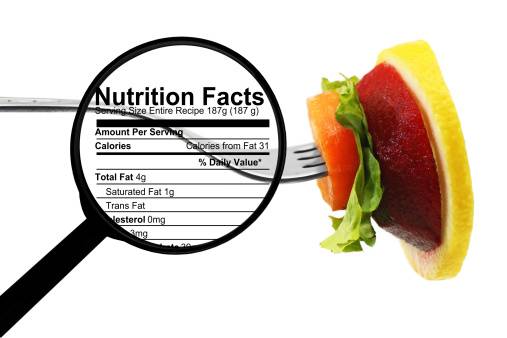Look for both the serving size and the number of servings in the package. Make sure you measure your portion size to the serving size listed on the label. If you don’t pay attention to this, you are probably eating more calories and fat than you realize!
Find the amount of calories in one serving and the number of calories from fat. If your goal is to lose weight, the lower both of these numbers are, the better.
Evaluate how a certain food fits into your daily food plan by using the % Daily Values (DV). Less than 5% is low. Aim low when looking at total fat, saturated fat, cholesterol, and sodium. More than 20% is high. Aim high when looking at fiber, vitamins, and minerals.
Choose foods low in fat, cholesterol, and sodium. This may help reduce your risk of heart disease, high blood pressure, and cancer.
Get more fiber, vitamins, and minerals. Choose more fruits and vegetables to get these nutrients.
What about carbohydrates? Choose whole-grain breads, cereals, rice, and pasta. Stay away from products that contain refined sugars, such as table sugar (sucrose) and high fructose corn syrup.
What do all these product label claims mean?
- Low calorie – less than 40 calories per serving
- Low cholesterol – less than 20 mg of cholesterol and 2 g or less of saturated fat per serving
- Reduced fat – 25% less fat than the usual product
- Good source of – provides at least 10% of the Daily Value of a particular vitamin or nutrient per serving
- Calorie free – less than 5 calories per serving
- Fat free/sugar free – less than 1/2 g of fat or sugar per serving
- High in – provides 20% or more of the Daily Value of a specified nutrient per serving
- High fiber – 5 or more grams of fiber per serving




















